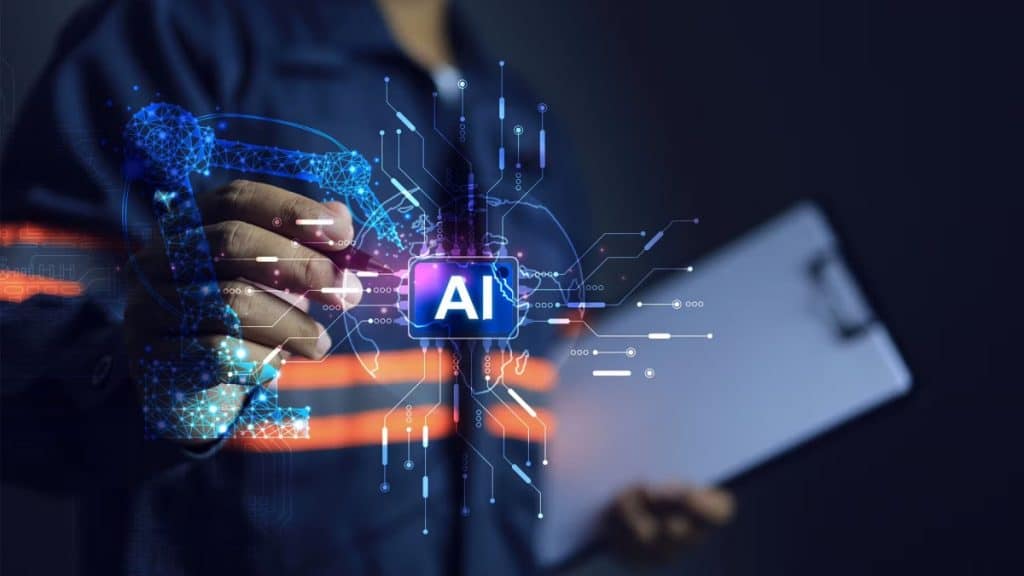Artificial intelligence (AI) is redefining the way businesses operate, particularly in the realms of customer service and manufacturing. Through the AI chatbot Development and automated visual inspection systems, companies are not only enhancing the quality of their operations but also achieving significant cost reductions. These advancements underscore the transformative potential of AI in modern industry.
AI Chatbots: Revolutionizing Customer Service Delivery
AI chatbots are at the forefront of revolutionizing customer service, offering a blend of improved customer experience and operational efficiency. These digital assistants are changing the way businesses interact with their customers, providing numerous advantages that go beyond traditional methods.
Elevating Customer Experience
- Immediate Assistance: AI chatbots offer real-time responses to customer queries, eliminating wait times and ensuring that customers receive prompt support. This immediacy enhances the overall customer experience and builds satisfaction.
- Uniform Service Quality: AI chatbots deliver consistent and reliable responses based on programmed algorithms and data sets. This consistency ensures that every customer interaction is of high quality, which helps in maintaining a strong brand reputation.
- Customizable Interactions: By analyzing customer data, AI chatbots can provide personalized responses and recommendations. This personalization makes interactions more engaging and relevant to individual customers.
- High Volume Management: AI chatbots can handle thousands of interactions simultaneously, making them invaluable during peak times when customer inquiries surge. This capability ensures that service levels remain high without the need for additional staffing.
- Global Reach: With multilingual capabilities, AI chatbots can cater to a diverse, global customer base. This ability to communicate in multiple languages helps businesses expand their reach and serve a wider audience effectively.
Operational Efficiency and Cost Savings
- Reduced Labor Costs: AI chatbots significantly cut down the need for large customer service teams, leading to substantial savings in labor costs. Human agents can be redeployed to more complex tasks that require a human touch.
- Lower Training Expenses: Unlike human agents, AI chatbots do not require extensive training. Once set up, they need only periodic updates, which drastically reduces training-related costs.
- Round-the-Clock Service: AI chatbots provide 24/7 customer service without the additional costs associated with shift work or overtime, ensuring that businesses can offer uninterrupted support.
- Minimized Infrastructure Needs: With AI chatbots handling a majority of customer inquiries, the need for large call centers and extensive infrastructure is reduced, resulting in lower overhead costs.
- Error-Free Interactions: The precision of AI chatbots minimizes errors, which in turn reduces the costs associated with correcting mistakes and managing customer dissatisfaction.
Automated Visual Inspection: Enhancing Quality in Manufacturing
In the manufacturing sector, AI-powered automated visual inspection systems are revolutionizing quality control processes. These systems utilize machine vision technology to provide unparalleled accuracy and efficiency, ensuring that only the highest quality products reach the market.
Superior Quality Control
- Consistent and Objective Evaluations: Automated visual inspection systems offer consistent and unbiased assessments, eliminating the variability and fatigue that can affect human inspectors. This ensures reliable defect detection and adherence to quality standards.
- Speed and Efficiency: These systems can inspect products at high speeds, far surpassing the capabilities of human inspectors. This rapid processing is essential for maintaining efficiency in high-volume production environments.
- High Precision: AI-driven inspection systems can detect minute defects that might be missed by human eyes, ensuring that every product meets stringent quality criteria. This high level of precision helps in maintaining a brand’s reputation for quality.
- Data-Driven Insights: Automated inspection systems generate vast amounts of data that can be analyzed to identify patterns and recurring issues. This data-driven approach facilitates continuous improvement in production processes.
Boosting Operational Efficiency
- Quick Defect Resolution: Automated systems quickly identify defects, allowing for immediate corrective actions. This minimizes downtime and keeps production lines running smoothly, enhancing overall productivity.
- Cost Reduction: Early detection of defects prevents defective products from advancing through the production process, reducing the costs associated with rework, scrap, and warranty claims.
- Resource Optimization: By ensuring that only high-quality components are used, automated visual inspection systems optimize material and resource utilization, reducing waste and increasing efficiency.
- Scalable Solutions: These systems can be scaled to meet growing production demands without a proportional increase in manual inspection resources. This scalability supports business growth and operational flexibility.
- Regulatory Compliance: Automated visual inspection systems provide detailed records of inspections, facilitating compliance with industry regulations and standards. This traceability is crucial for maintaining quality and meeting regulatory requirements.
Conclusion
The integration of AI chatbots and automated visual inspection systems is a testament to the profound impact of AI on modern industry. AI chatbots are revolutionizing customer service by delivering immediate, consistent, and personalized interactions while significantly reducing operational costs. In manufacturing, automated visual inspection systems ensure superior quality control, operational efficiency, and cost savings. Together, these technologies highlight the immense potential of AI in driving innovation, enhancing competitiveness, and shaping the future of various industries.
